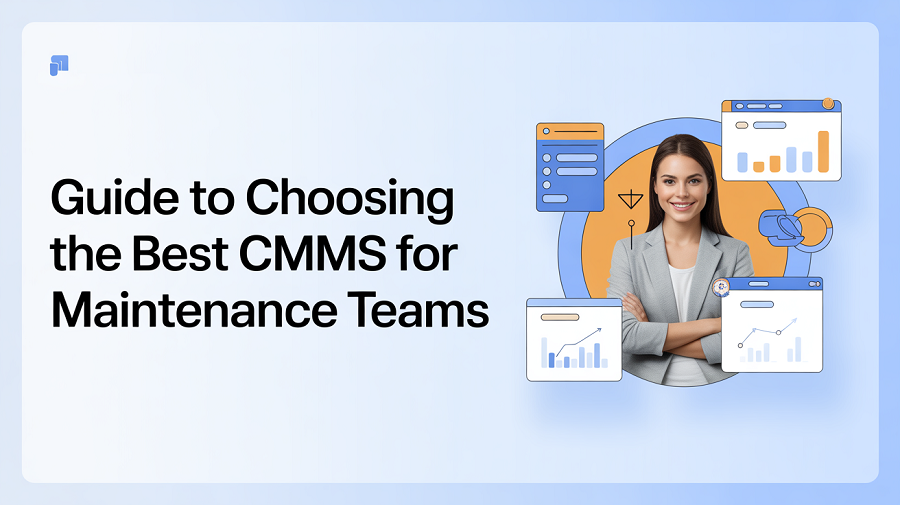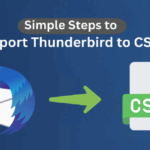Guide to Choosing the Best CMMS for Maintenance Teams

In the modern industrial world, where time is of the essence, the unplanned downtime may crash productivity, swell up expenses on maintenance and, not to mention, endanger safety. Maintenance departments are moving to reactive fix-it-breaks attitudes to proactive approaches that predict problems before they arise. An efficient Computerized Maintenance Management System (CMMS) plays the role of a technological basis of this change and is the center of work orders, asset histories, preventive schedules, and analytics. The guide provides maintenance professionals, facility management and operations leaders with an effective system to assess, choose, and adopt the CMMS that will best suit their organizational objectives.
Understanding Your Maintenance Needs
——————————–
The most important step to making the right choice of CMMS is understanding what you need in terms of maintenance. The maintenance teams work in different conditions, on a manufacturing floor, and large facilities and issues are diverse. You should start by evaluating your existing maintenance activities to determine pain areas like high levels of unplanned downtimes, slow work orders, or ineffective asset documentation. Knowing the underlying factors to such problems helps you to know what your CMMS should preferably be.
The second step is to examine the characteristics of your assets and the nature of the maintenance needed. Does that make your assets mostly mechanical or electrical or a combination of the two? What is the age and status of these assets? This information affects the process of maintaining prevention and predictive service scheduling and defines the value of real-time monitoring capabilities. Making sure that you match your asset profile with the abilities of the system is important so that the CMMS can be useful to your philosophy of maintenance.
Last but not least, establish specific, quantifiable objectives of what you would like your CMMS to achieve. Some of the common goals are to minimize repair times, enhance on-time maintenance compliance, optimize inventory of spare parts, and enhance visibility on the cost of maintenance. Setting these goals early assists in getting your feature requirements straight, and in evaluating vendors, where you make sure that the new system you are buying brings real benefits that are in line with your organizational priorities.
Essential Features to Look For in a CMMS
——————————–
A future-proof CMMS must deliver core functionality plus advanced capabilities:
Work Order Management
- Automates the work order generation, allocation and monitoring system to prevent time wastages and lack of communication.
- Allows prioritization of asset resources based on urgency, criticality of assets, or compliance needs.
- Records of labor hours, parts consumed and status of completion, to accurately record costs of maintenance and carry accountability.
- Facilitates automated notifications and reminders so that tasks can be performed on time, and less work orders can be pending.
- Enables attaching photos, documents and notes in work orders to improve clarity and documentation.
Asset and Inventory Management
- Keeps current records of assets, such as specifications, maintenance history, warranties and location.
- Connects inventory management to assets and work orders so that the parts requisition process is automated and that out-of-stock situations can be avoided.
- Offers real-time inventory, and reorder level alerts to achieve stock optimization and minimize carrying costs.
- Supports barcode/RFID scanning that allows monitoring assets and inventory faster and more accurately in the field.
- Mapping of the lifecycle of the assets to monitor the depreciation and preempt the maintenance or replacement process.
Preventive and Predictive Maintenance
- Engineers’ preventive maintenance tasks are based on the calendar date, hour usage, or meters.
- Take advantage of the last, and the AI algorithms to predict potential equipment malfunctions before they occur.
- Integrates with IoT gadgets to track the position of the assets in real time, such as temperature, vibration, or pressure levels.
- Provides dashboards with offers and maintenance warnings ondometers for future and overdue maintenance, which leads to better compliance and reduced emergency maintenance.
- Helps lengthen the life of assets and keep the down time at the minimum with timely interventions.
Reporting and Analytics
- Provides tailor-made reports on such important indicators as work order completion rates, mean time to repair (MTTR) and maintenance costs.
- Plots trend and pattern with the help of dashboards to facilitate decision making process.
- Enables one to break down to the reason behind the frequent breakdowns or bottlenecks.
- Enables exportation and distribution of reports to make stakeholders informed and on track.
- Helps calculate maintenance activities of ROI and encourages continuous improvement.
Mobile Accessibility
- Provides the technicians with the possibility to access, update, and close work orders via mobile devices and both online and offline.
- Offers real-time synchronization to ensure that field updates are immediately recorded in the main system.
- Allows barcode scanning and photos uploads to make data easy to capture and enhance accuracy.
- Improves the productivity of technicians by providing them with asset manuals, history, and troubleshooting manuals.
- Enables interoffice communication and office personnel and field personnel to reduce delays and mistakes.
AI-Powered Maintenance Assistant
- Would go through maintenance data and advise on the best scheduling and resource allocation.
- Forecasts the demand for spare parts to streamline inventory and prevent shortages or excess inventory.
- Produces recommended working instructions and checklists depending on the asset type and failure mode.
- Detection of abnormalities and trends that could go undetected by human operators to enable proactive measures.
- Learn continuously through the results of maintenance so as to improve future predictions and recommendations.
IoT Meter Reading
- Indirectly linked to meters and sensors on equipment to collect data automatically and in real-time.
- Initiates maintenance processes according to the set temperature, pressure, or other important parameters.
- Eliminates errors and manpower expenditures in the metering process and maximizes the frequency of monitoring.
- Issues notifications in case of abnormal values that may represent the emergence of faults or safety risks.
- Allows constant monitoring of the condition to enhance the safety of operation and reliability of the asset.
Complete Asset Lifecycle Management
- Tracks asset position based on procurement to commissioning, operation, maintenance and retirement.
- Processes budgeting and financial forecasting including depreciation and total cost of ownership information.
- Assures adherence to safety, environmental, and regulatory requirements during the lifecycle of the asset.
- Enables the strategic decision-making of repair or replacement based on the lifecycle data and current performance trends.
- Combines procurement and inventory to automate acquisition of assets and parts planning.
Evaluating Deployment Options: Cloud vs. On-Premises
——————————–
Cloud-Based CMMS
- Rapid Deployment: Cloud CMMS solutions generally need little IT configuration and can be implemented faster and have shorter time to value.
- Automatic Updates: Software updates, patches and upgrades are managed by vendors, and users need not bother with additional efforts.
- Anywhere Access: Cloud CMMS systems allow devices with internet connectivity to access anywhere and meet the requirements of remote and mobile workers.
- Lower Upfront Costs: Subscription-based pricing gets rid of huge capital outlays on hardware and infrastructure which is easier to plan.
- Scalability and Flexibility: Cloud services can easily be expanded to suit the increased requests of the organization, and additional users or features may be added easily.
On-Premises CMMS
- Complete Data Control: The software is hosted on the organization’s servers, and the organizations have total control over sensitive maintenance and asset data.
- Customization Potential: On-premises systems have more often been customized to meet specific workflows or regulatory needs.
- Integration with Internal Systems: Easily interacts with the uniform internal enterprise systems such as the ERP or SCADA to allow the circulation of information conveniently.
- Increased upfront capital: Hardware, software license and IT maintenance facilities were to be purchased and hence the start-up costs can be more and lead to higher start up and operating costs.
- Reliance on IT Resources: Implementation, upgrades, backup and security require IT personnel in the company, and it may be overloading the employees and skills.
The Evaluation and Selection Process
——————————–
Building a Feature and Vendor Scorecard
A structured scorecard should be created to make the objective assessment of CMMS options possible. This would include enumerating all the desired features and capabilities of vendors and then weighing them using a weight factor that considers the significance of these features or capabilities to your unique maintenance objectives. The scorecard must be a balanced scorecard on technical functionality, usability, vendor support, scalability, and total cost of ownership. A qualified approach will allow the removal of bias, trade-offs, and focus on solutions that best fit the needs of operations.
Conducting Demos and Trials
Experiential demos and trial versions can provide invaluable information besides the marketing documents. The most important step in the process is to engage key stakeholders, such as technicians and planners as well as IT staff, to monitor the integration of the software into the daily processes and how it addresses real-world issues. During this stage, Test plays a critical role such as work order management, the ability to access it on the move, and reporting. The results of these sessions may show usability problems, integration possibilities, and responsiveness of the vendor, which can be vital in the long-term success.
Prioritizing Based on Must-Haves
The features are not equally important. Concentrating on necessities that are core should be those that immediately respond to your most significant pain points and upkeep goals. Keep the essentials and nice to have separate so as not to be distracted by unnecessary bells and whistles. Prioritization will mean that you invest in a CMMS that provides actual operational benefit and may be measured in ROI rather than one that is loaded with functionality that will not be utilized and embraced in practice.
Planning for Successful CMMS Implementation
- Data Preparation and Cleansing
Pre-migration Organize and clean existing assets, maintenance, and inventory data. Correct and full information will provide seamless onboarding, as well as reduce mistakes when use the system.
- Role-Based Training
Developed specific training programs, which meet the requirements of technicians, planners, and managers. Practical experience and documentation increase the level of user confidence and uptake.
- Clear Change Management Strategy
Recommend the benefits and changes that will be introduced by the CMMS to the stakeholders. Preempt resistance through early involvement of users, frequent feedback, and realistic expectations.
- Phased Rollout Approach
Introduce CMMS to a pilot department or facility to collect feedback and make some modifications first, then introduce it on a large scale. This minimizes interruptions and maximizes the opportunities of success.
- Defining Metrics and Continuous Improvement
Preventive maintenance compliance, the mean time to repair (MTTR), and the decrease of time of downtime are some of the KPIs that can be monitored. Periodically review the performance data to streamline the work process and system performance.
Conclusion
Selection of the most appropriate CMMS requires a clear vision of what you expect to achieve in maintenance, a strict assessment system, and a strict implementation program. With an emphasis on such key aspects as work order management, predictive maintenance, mobile access, and AI-driven insights, the leaders of maintenance can choose the solution that would provide a tangible ROI, lessen the unplanned downtimes, and improve the efficiency of its operations. This guide is your ultimate road map to proactive and future ready maintenance strategy.



